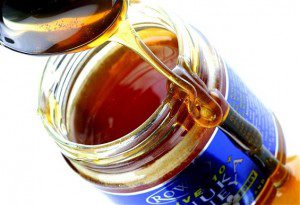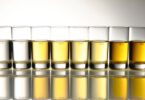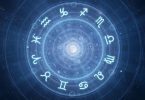By Deane Alban
Contributing Writer for Wake Up World
The world’s #1 ranked tennis player Novak Djokovic starts each day with it. Actress Scarlett Johansson attributes her beautiful skin to it. Millions of people buy it to ward off disease and illness, including cancer and antibiotic resistant bacteria.
What is this miracle superfood?
It’s manuka honey.
Honey has been used medicinally both internally and externally for 5,000 years. All unprocessed honey contains antibacterial, antiviral, anti-fungal, and antiseptic properties.
But manuka honey stands out above the rest. This unique honey is produced by bees that harvest pollen from the manuka tree (Leptospermum scoparium) which grows wild throughout New Zealand and parts of Australia. This plant goes by many other names including manuka myrtle, New Zealand tea tree, New Zealand tea bush, broom tea tree, and tea tree. It is in the same plant family (Myrtaceae) as another highly-valued medicinal plant – the Australian tea tree – the source of tea tree oil.
[pro_ad_display_adzone id=”110028″]
Science Sheds New Light on an Ancient Remedy
The New Zealand Maori have long been aware of this plant’s medicinal properties, but it wasn’t until the 1990”²s that researchers at Waikato University in Hamilton, NZ discovered that manuka honey had unique properties. That was the start of its receiving global attention.
In a recently published 5-year cancer study that appeared in the prestigious scientific journal PLOS ONE, manuka honey was proven to inhibit the growth of several kinds of tumors.
But where manuka honey has really gotten both scientists and the public excited is its ability to fight bacteria, even antibiotic resistant strains. Clinical trials have found that manuka honey can effectively eradicate more than 250 strains of bacteria, including resistant varieties such as MRSA (methicillin resistant Staphylococcus aureus) and MSSA (methicillin sensitive Staphylococcus aureus).
The Manuka Honey Difference
All honey in its natural state contains antioxidants, enzymes, flavonoids, and other compounds that contribute to its medicinal properties. But manuka honey contains an ingredient not found elsewhere – called the Unique Manuka Factor (UMF).
Every batch of genuine New Zealand manuka honey is ranked according to its level of UMF and then is priced accordingly. A UMF rating of 10 or higher is recommended for medicinal use. The higher the concentration of UMF, the more expensive that batch of honey will be. Honey at the “10 or above level” can be marketed as “UMF” or “active” manuka honey. But unfortunately there is little to stop an unscrupulous manufacturer from including the words “active” or “UMF 10+” on their product’s label.
And so the money games begin! And the search for genuine manuka honey just got a little harder for consumers.
Manuka Madness: Sabotage, Theft, and Fraud
It has recently come to the public’s attention that store bought honey is often adulterated. A shocking study by Food Safety News revealed that 75% of honey carried by major stores is so ultra-filtered that it no longer contains any pollen and that, by current standards, it shouldn’t even be considered honey!
Since manuka has become a $150 million-a-year industry for New Zealand, what has followed can best be described as “Manuka Madness”.
Some beekeepers go as far as using helicopters to prospect for new sites. Land grabs take place between rival producers who vie for the best spot for their bee hives. Bee hives have been literally burned down by their competitors. The New Zealand Herald reports manuka bee hive thefts and even fatal poisonings of thousands of bees. And in the UK, some retailers are even forced to use security cases, similar to DVD cases, to prevent rampant honey shoplifting.
Now the latest installment of this madness is a flood of manuka fakes on the market. It sounds crazy until you realize that a jar of manuka honey – whether real or fake – can cost upwards of $50!
Massive food fraud was uncovered when officials did some basic math. Officially 1,700 tonnes of genuine manuka are produced annually in New Zealand, which is about 3 million small jars. But an estimated 10,000 tonnes are sold around the world each year. It doesn’t take a math genius to figure that roughly 80% of all manuka sold is fake.
(Not into metric? One tonne = 2,204.6 pounds.)
As a result, genuine manuka honey exporters are asking the New Zealand government to clamp down on those flooding the market with fraudulent honey which is costing them money and bringing their industry into international disrepute.
How to Get the Real Thing
The easiest and most reliable way to make sure you aren’t getting fake manuka honey is to buy it from one of the 50 companies that are Unique Manuka Factor Honey Association licensees. You can find their list of approved manuka honey producers at UMF.org.
Also it’s almost certainly better to buy at a reputable retail location or directly from one of the company’s on the list. Amazon is struggling to keep counterfeit products of all kinds out of their marketplace, so if you are depending on your manuka’s medicinal value, it’s probably not worth the risk of buying it there. And since all unprocessed honey has medicinal value, if you can’t buy manuka honey that you’re confident in, it would make more sense to buy local raw honey instead… and you have the added satisfaction of supporting your local bee keeper.
Source:
- http://articles.mercola.com/sites/articles/archive/2012/02/20/the-natural-way-to-speed-wound-healing.aspx
- http://www.dailymail.co.uk/news/article-2675816/Fake-manuka-30-jar-Dodgy-dealers-cash-honey-popular-stars-including-Scarlett-Johansson.html
- http://www.telegraph.co.uk/foodanddrink/10938108/Manuka-honey-fraud-what-else-is-fake-in-our-food.html
- http://www.thegrocer.co.uk/fmcg/the-great-manuka-honey-swindle/359035.article
- http://www.independent.co.uk/life-style/food-and-drink/features/the-manuka-honey-scandal-9577344.html
- http://www.foodsafetynews.com/2011/11/tests-show-most-store-honey-isnt-honey/#.U7xCUflkTmd
- http://online.wsj.com/articles/on-amazon-pooled-merchandise-opens-door-to-knockoffs-1399852852
- http://www.nzherald.co.nz/business/news/article.cfm?c_id=3&objectid=11286552
Previous articles by Deane:
- Experience the Brain Benefits of Do-It-Yourself Biofeedback
- Advantame – the “New & Improved” Artificial Sweetener, Approved by FDA
- 5 Reasons You Aren’t Getting Enough Vitamin D.. and What You Can Do About It
- Five Common Food Additives That Can Damage Your Brain
- Food Scams and Myths: Why Quality Matters
- The Alarming Truth About Supermarket Meat
- 18 Choices You Make Every Day That Keep You Up at Night
- Can’t Get the Hang of Meditation? Try This Instead
- Stress, Telomeres, and the Secret to Prevent Aging
- 20 Common Medications That Can Cause Memory Loss
- 5 Common Food Additives That Are Toxic to Your Brain
- The ABCs of Vitamins for Memory and Brain Health
Contributing writer Deane Alban holds a bachelor’s degree in biology and has taught and written on a wide variety of natural health topics for over 20 years. Her current focus is helping people overcome brain fog, “senior moments”, and other signs of mental decline now, and preventing Alzheimer’s and dementia in the future.
The human brain is designed to last a lifetime, but modern life takes a greater toll on the brain than most people realize. Deane teaches the best ways to keep your brain healthy and stay mentally sharp for life at her website BeBrainFit.com.
[pro_ad_display_adzone id=”110027″]








